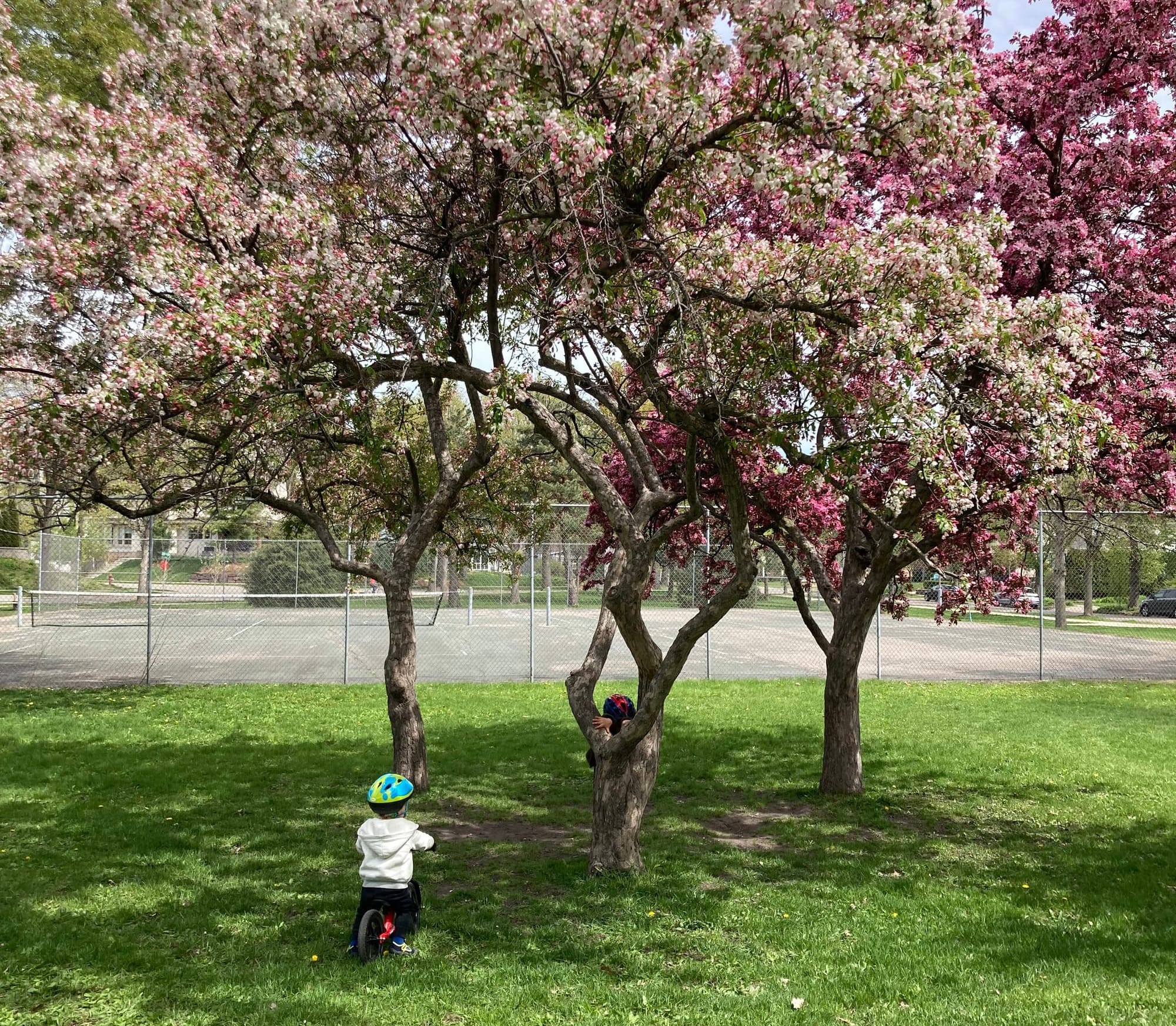It's spring—get out!

Between work and chores, it can be hard for parents to get outside at all with their kids, much less to have time for slowed-down activities that help children connect with the natural world. Grandparents can help—and springtime invites opportunities with the conjunction of longer days, school vacations, and the rush of change outdoors.
You can find lots of great lists of activities online that you can adapt to where you live and what you and your grandchildren like best to do. Here are a few of my favorites—which is to say, they are a few favorites of my grandchildren or children (from back in the day).
Babies
Sit in the grass, or lie on a blanket in the grass. New sensations and explorations are there for them in the sun, shade, and breeze, the prickle of the grass blades, the fuzzy yellow of a dandelion. (Of course, be careful about what goes toward their mouth!)
Toddlers
Exploration walk. Of course, with toddlers, this is any walk. The only difference in a spring exploration walk is your focus, helping them notice specific things that signal spring—a shrub budding, a bug, a tulip emerging. As with any walk with a toddler, the destination needs to be secondary, or even non-existent—the whole point is the meandering and the wonder.
Preschool
My favorite activity with preschoolers is more a style than an activity—it’s to observe and learn as we go. What catches your eye, ear, or nose? Bring it to your grandchild’s attention, and figure out something about it. (Did you smell something lovely? Which flower? What is it’s name?) Even more important, what catches your grandchild’s attention? Let yourself be drawn in by what they see or hear or smell or touch, and—together—find out something about it. (Foraging experts can include taste, too…the rest of us had better steer clear.)
Grade school
At some point, kids will outgrow Grandma pointing things out, and they’ll want to do their own thing. At that point, we can switch to facilitator, and occasionally teacher. As facilitators, we can get the kids to a vernal pond or a creek to give them the chance to explore. Maybe we can bring along a magnifying glass to see a bug or bud close up. We can help kids find materials to make a rain gauge, raise butterflies, or to draw or paint from nature. Maybe we can even take them camping. And we can teach skills—how to imitate a mourning dove, blow a grass whistle, get a close-up photo, or plant a garden.
Older kids, teens
Older kids and teens are past having parents—and secondarily, grandparents—at the center of their world. These days, there’s also the unfortunate tendency to center activities in the online world rather than the physical one, which has led to a trend away from engagement with the natural world. Grandparents can’t fight the phone alone, but we can offer outdoor opportunities that will appeal to some older kids. First, if you can, welcome their friends on your outdoor adventure—that way, you provide the opportunity, and the friends provide the fun for each other. (Side benefit—you get to see them interact with their friends.) Another good strategy is to make the outing purposeful in a way that connects with your grandchild’s interests—maybe you go geocaching, or to a spot with a climbing or jumping challenge, or do community service (maybe outdoor spring cleaning), or practice art or photography.

Grandparents make it fun
Lead with fun. Kids need to learn to play outdoors. If they are used to, say, video games, learning the skills and fun of skipping a rock—even the possibility of skipping a rock—needs a basic introduction and practice. Which makes it sound like work, which will drive the kid back to the video game. So: lead with fun—let the child win a rock-throwing contest, find bugs for a few minutes then blow bubbles, tie the outdoor activity to something you know the kid likes, like a favored toy, activity, or real friend that could join you.
Go with the child’s interests: Once you’re outside, you might be tempted to stick with your plan—say, finding small animals in a creek. But the kid might well prefer to balance on rocks, or collect pebbles. Better, I think, to let them do their thing. Maybe you can sneak in a few observations of those animals—especially if the child finds one on their own. If you notice what interests the child and get excited about that, it shows the child that whatever they have spotted is interesting and important, and that they are interesting and important, because you care about what they see.
Model attention—and excitement: One way to model attention and excitement is to notice the child’s interests (see above). Another is to notice things yourself, and share them: “Look at that cloud! That bird! I like the sound of the creek, do you?” Careful not to overdo it, though—that wouldn’t be fun, or in tune with the child’s interests.
Snacks, always snacks: Nothing is fun when you’re hungry or thirsty. Bring something tasty to share outside. Time to sit and eat is time to talk and observe, too.
Scope out the bathrooms or alternatives ahead of time: Nature calls in more ways than one!